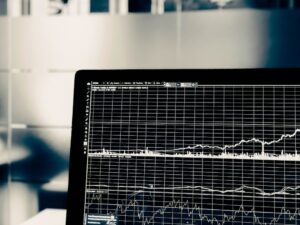Margin Calls in Forex Trading: What They Are and How to Avoid Them
Forex trading offers immense opportunities for individuals to make substantial profits. However, it also comes with its fair share of risks, one of which is the dreaded margin call. A margin call occurs when a trader’s account balance falls below the required margin level, leading to the broker liquidating their positions to cover the losses. Understanding margin calls and how to avoid them is crucial for any forex trader.
What is a Margin Call?
In forex trading, margin is the amount of money required to open and maintain a position. It acts as a collateral or a security deposit to cover potential losses. When a trader opens a position, they are required to deposit a certain percentage of the trade size as margin. The specific margin requirements vary depending on the broker and the leverage chosen.
Margin calls are triggered when the account’s equity (the account balance plus or minus any unrealized profits or losses) falls below a certain percentage of the used margin. This percentage is known as the margin call level. When this level is reached, the broker may issue a margin call, requesting the trader to deposit additional funds to bring the account back to the required margin level.
How to Calculate Margin Call Level
To calculate the margin call level, you need to understand two important terms: used margin and free margin.
Used margin is the amount of money set aside by the broker to maintain open positions. It is calculated by multiplying the position size by the required margin percentage.
Free margin, on the other hand, is the amount of money available in the trading account to open new positions. It is calculated by subtracting the used margin from the account balance.
The margin call level is expressed as a percentage and is calculated by dividing the used margin by the account equity and multiplying it by 100.
Margin Call Level = (Used Margin / Account Equity) * 100
For example, if a trader has an account equity of $10,000 and a used margin of $2,000, the margin call level would be:
($2,000 / $10,000) * 100 = 20%
In this case, if the account equity falls below 20% of the used margin, a margin call will be triggered.
How to Avoid Margin Calls
While margin calls can be stressful and potentially devastating to a trader’s account, they can be avoided with careful risk management and following some essential guidelines:
1. Set Realistic Leverage: Leverage amplifies both profits and losses. It is crucial to choose a leverage level that matches your risk tolerance and trading strategy. Higher leverage increases the likelihood of margin calls, so it’s important to use it judiciously.
2. Use Stop-Loss Orders: A stop-loss order is an essential risk management tool. It allows traders to set a predetermined exit point to limit potential losses. Placing stop-loss orders on every trade can help protect your account from sudden market movements.
3. Monitor Account Balance and Margin Level: Regularly checking your account balance and margin level is crucial to avoid surprise margin calls. Keeping track of your trades and their potential impact on your account will help you stay within the required margin level.
4. Avoid Overtrading: Overtrading, or opening too many positions at once, can quickly deplete your account balance and increase the likelihood of margin calls. It is essential to have a well-thought-out trading plan and stick to it.
5. Maintain Sufficient Funds: Keeping enough funds in your trading account is crucial to avoid margin calls. Depositing additional funds, when necessary, will ensure you have enough margin to support your positions.
6. Educate Yourself: Continuous learning and staying updated with market news and analysis can help you make informed trading decisions. Understanding market trends, economic indicators, and technical analysis can minimize the chances of unexpected losses.
Conclusion
Margin calls are an inherent risk in forex trading, but they can be avoided with responsible risk management. By setting realistic leverage, using stop-loss orders, monitoring account balance and margin levels, avoiding overtrading, maintaining sufficient funds, and continuously educating yourself, you can minimize the chances of margin calls. Remember, forex trading is a high-risk endeavor, and it is crucial to approach it with caution and discipline.






